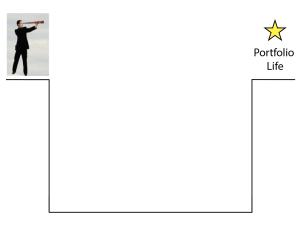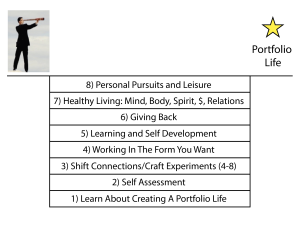Bridging to a Portfolio Life
September, 2016
What will happen at the end of your career? Do you want your next step to include some form of meaningful work, ongoing learning and development, opportunities to give back, healthy living, and personal pursuits and leisure? If that is your desire after retirement, this blog will help you build a bridge to it.
Irish economist Charles Handy in his 1989 book The Age of Unreason, coined this destination a “portfolio life”. He described it as “A portfolio of activities – some we do for money, some for interest, some for pleasure, some for a cause…the different bits fit together to form a balanced whole…greater than the parts.”
Many of my clients come to me seeking help laying the foundation for leaving their job. Most are looking for another leadership opportunity. A growing number are also seeking an alternative to traditional retirement when the time is right. They are concerned about a decline in their life’s meaning and engagement after ending their working identity. If this resonates with you, consider a portfolio life as a means to optimize future satisfaction and significance after you have built a successful career.
Imagine you are standing on the edge of an elevated platform. Below you is a landing too far down for you to jump safely. Twenty feet in front of you there is a landing spot you hope to arrive at sometime in the future. You look ahead and see on that landing either a clear or partial image of a portfolio life. You are pulled towards that new opportunity, even if it is not clear what it might be.
You are excited about moving toward future possibilities, but frightened by the risks immediately in front of you if you move too quickly without solid footing beneath you. You know you need a bridge, or at least a safe landing, when you make that leap.
Perhaps you are feeling worried or stuck. You could stay where you are, but know that eventually you will need to take that step. The fear of making a bad decision, possibly falling into a financial, career or emotional hole, weighs heavily on you. Does this scenario sound familiar? If so, it’s time to start laying a more solid foundation well in advance of the day you can finally cross to the other side.
To get to that preferred destination, over the chasm of fear and risk, you need to lay down a collection of platforms to get you there safely and successfully. You will need to build your transition base from above with whatever time and energy you can spare for this task.
To get started, I suggest you employ the Ronnie Brooks method. Brooks is one of the founders of the Wilder Foundation’s Shannon Institute, and has taught this method for many years. Here is my interpretation of her model. You’ll need to build a platform leading to your preferred future from the top down. Brooks suggests that you imagine a steadily growing platform of mattresses you toss down from above.
Step by step you will be building a foundation that leads to your exit and a new start as you create this transition bridge. While this process might seem laborious and time consuming, it will make your transition more methodical and less risky. Even with just a few mattresses tossed down, a softer, safer transition becomes much more likely.
I have listed in the graphic below the eight transition platforms in a logical order, starting with learning about the creation of a portfolio life. Begin by reading my October, 2014 blog, “Will a Portfolio Life Become Your Second Half Story?”, then consider reading the book, Portfolio Life, by David Corbett.
Construct at least your first three platforms before making your move. Rediscover your talents and passions. Assess your financial ability and time table for letting go of your full-time working identity. Begin shifting connections and crafting experiments in each of the top five layers of your portfolio life platform. After reading my October, 2014 blog, continue learning by clicking these links about Self Assessment, Shifting Connections and Crafting Experiments.
Start building a foundation for your portfolio life now. In time, you’ll have solid ground beneath your feet, reduced risk, and a cushion if you decide (or need) to jump earlier than you had planned. Is it time for you to start tossing down those mattresses?




